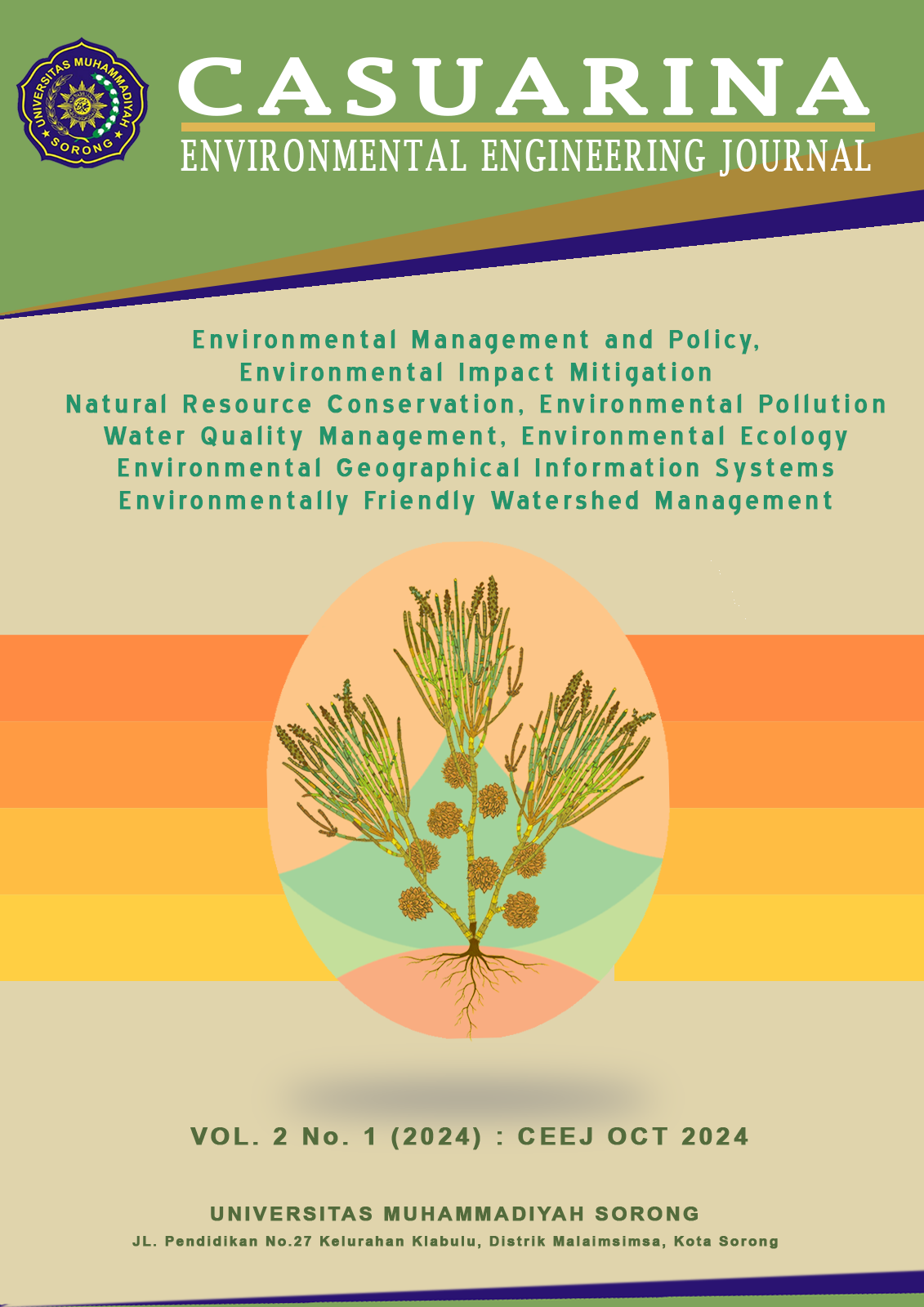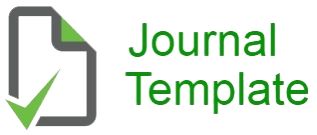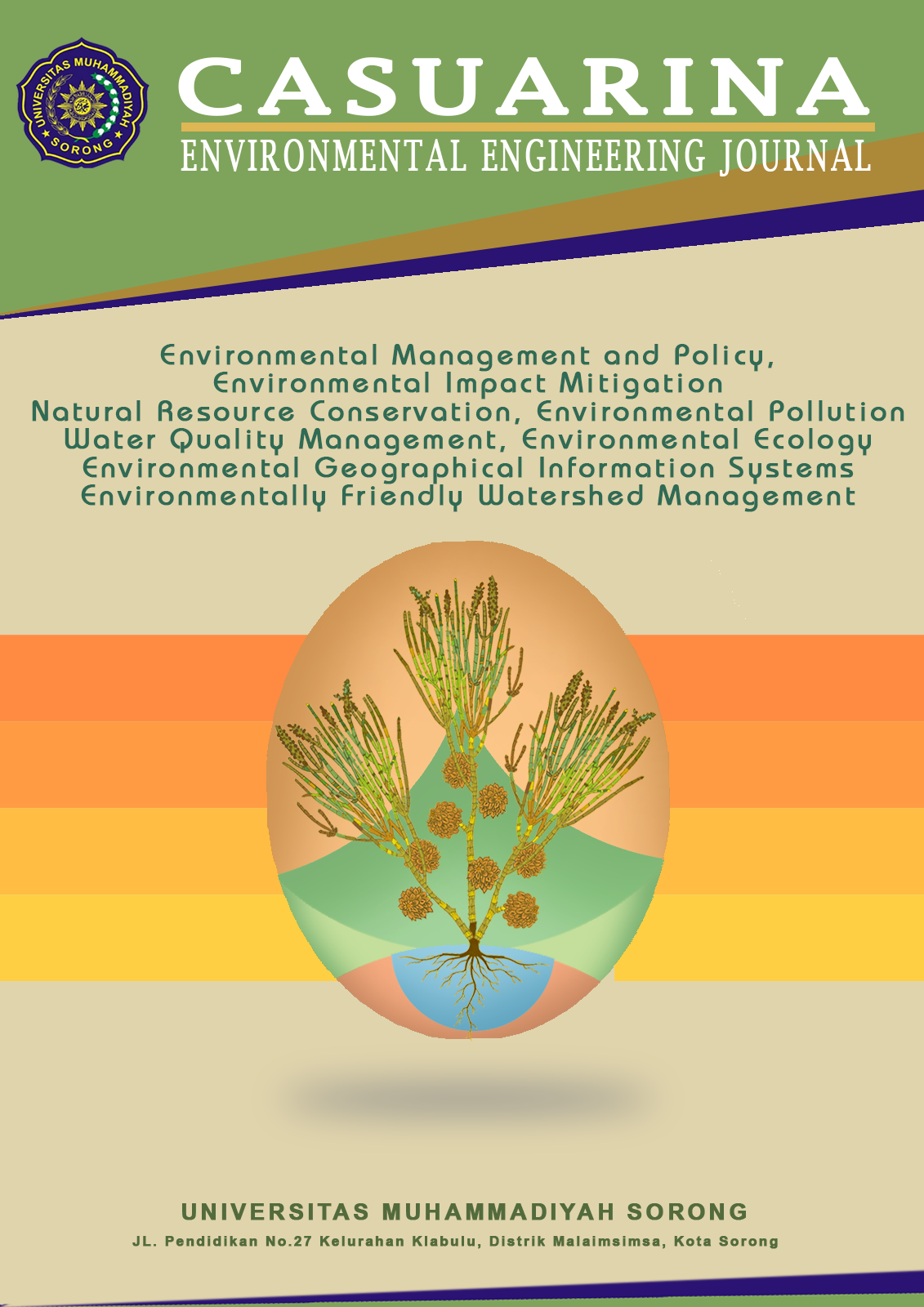Perancangan Dan Evaluasi Sistem Filtrasi Berbasis Bahan Alami Untuk Peningkatan Kualitas Air Bersih
DOI:
https://doi.org/10.33506/ceej.v2i1.3587Kata Kunci:
Sistem fitrasi, Kualitas air, koagulan, tawas, biji kelor, parameter air, media filter, Water supply systemAbstrak
Penelitian ini mengkaji efektivitas sistem filtrasi air sederhana menggunakan kombinasi media alami dan koagulan. Sistem filter terdiri dari sabut kelapa, pasir pesisir, zeolit, karbon aktif, arang kayu, kerikil, dan pecahan karang. Koagulan yang diuji adalah tawas dan biji kelor. Proses filtrasi menunjukkan penurunan turbiditas dari >1000 NTU menjadi 6,94 NTU dan normalisasi pH dari 8,3 ke 6,9. Namun, terjadi peningkatan TDS dan konduktivitas. Penggunaan koagulan pasca-filtrasi menghasilkan hasil beragam, dengan biji kelor menunjukkan potensi lebih baik dalam menjaga pH dan kejernihan air dibandingkan tawas. Meskipun beberapa parameter seperti pH, TDS, dan suhu memenuhi standar air bersih setelah pengolahan, tingginya TSS (>1000 mg/L) dan turbiditas (72,5-270 NTU) mengindikasikan perlunya optimasi lebih lanjut. Penelitian ini menyoroti potensi dan tantangan dalam pengembangan sistem pengolahan air berbasis sumber daya lokal, serta pentingnya penyesuaian waktu pengendapan dan dosis koagulan untuk meningkatkan kualitas air hasil olahan.
Referensi
E. Kusniawati and H. Budiman, “A ANALISA SIFAT AIR INJEKSI BERDASARKAN PARAMETER pH, TSS, TDS, DO DAN KESADAHAN,” J. Tek. Patra Akad., vol. 11, no. 02, pp. 9–21, 2021, doi: 10.52506/jtpa.v11i02.109.
I. Suliastuti and T. I. S.P Abrina Anggraini, “Pengaruh Perbandingan Jumlah Media Filter (Pasir Silika, Karbon Aktih, Zeolit) Dalam Kolom Filtrasi Terhadap Kualitas Air Mineral,” pp. 1–5, 2011.
T. Hartuno, Udiantoro, and L. Agustina, “Desain Water Treatment menggunakan Karbon Aktif dari Cangkang Kelapa Sawit pada Proses Pengolahan Air Bersih di Sungai Martapura,” J. Ilm. Pertan. Ziraa’ah, vol. Vol. 39, no. 3, pp. 2013–2015, 2014, [Online]. Available: https://ojs.uniska-bjm.ac.id/index.php/ziraah/article/download/81/76
T. T. Bambang, S. Suprapto, and M. Ginting, “Pengaruh Waktu Kontak Air Payau Dalam Saringan Pasir Dan Arang Kayu Terhadap Penurunan Jumlah Bakteri Coli-Form, Kekeruhan Dan Salinitas Untuk Kebutuhan Air Minum,” J. Ilm. PANNMED (Pharmacist, Anal. Nurse, Nutr. Midwivery, Environ. Dent., vol. 8, no. 3, pp. 218–228, 2019, doi: 10.36911/pannmed.v8i3.332.
Unduhan
Diterbitkan
Cara Mengutip
Terbitan
Bagian
Lisensi
Hak Cipta (c) 2024 Casuarina: Jurnal Teknik Lingkungan

Artikel ini berlisensiCreative Commons Attribution-NonCommercial-ShareAlike 4.0 International License.
Please find the rights and licenses in Casuarina: Environmental Engineering Journal. By submitting the article/manuscript of the article, the author(s) agree with this policy. No specific document sign-off is required.
1. License
The non-commercial use of the article will be governed by the Creative Commons Attribution license as currently displayed on Creative Commons Attribution-NonCommercial-ShareAlike 4.0 International License.
2. Author(s)' Warranties
The author warrants that the article is original, written by the stated author(s), has not been published before, contains no unlawful statements, does not infringe the rights of others, is subject to copyright that is vested exclusively in the author, and free of any third party rights, and that any necessary written permissions to quote from other sources have been obtained by the author(s).
3. User/Public Rights
Casuarina: Environmental Engineering Journal's spirit is to disseminate articles published are as free as possible. Under the Creative Commons license, Casuarina: Environmental Engineering Journal permits users to copy, distribute, display, and perform the work for non-commercial purposes only. Users will also need to attribute authors and Casuarina: Environmental Engineering Journal on distributing works in the journal and other media of publications. Unless otherwise stated, the authors are public entities as soon as their articles got published.
4. Rights of Authors
Authors retain all their rights to the published works, such as (but not limited to) the following rights;
- Copyright and other proprietary rights relating to the article, such as patent rights,
- The right to use the substance of the article in own future works, including lectures and books,
- The right to reproduce the article for own purposes,
- The right to self-archive the article (please read our deposit policy),
- The right to enter into separate, additional contractual arrangements for the non-exclusive distribution of the article's published version (e.g., post it to an institutional repository or publish it in a book), with an acknowledgment of its initial publication in this journal (Casuarina: Environmental Engineering Journal).
5. Co-Authorship
If the article was jointly prepared by more than one author, any authors submitting the manuscript warrants that he/she has been authorized by all co-authors to be agreed on this copyright and license notice (agreement) on their behalf, and agrees to inform his/her co-authors of the terms of this policy. Sentralisasi will not be held liable for anything that may arise due to the author(s) internal dispute. Sentralisasi will only communicate with the corresponding author.
6. Royalties
Being an open accessed journal and disseminating articles for free under the Creative Commons license term mentioned, author(s) aware that Casuarina: Environmental Engineering Journal entitles the author(s) to no royalties or other fees.
7. Miscellaneous
Casuarina: Environmental Engineering Journal will publish the article (or have it published) in the journal if the article editorial process is successfully completed. Casuarina: Environmental Engineering Journal's editors may modify the article to a style of punctuation, spelling, capitalization, referencing, and usage that deems appropriate. The author acknowledges that the article may be published so that it will be publicly accessible and such access will be free of charge for the readers as mentioned in point 3.








